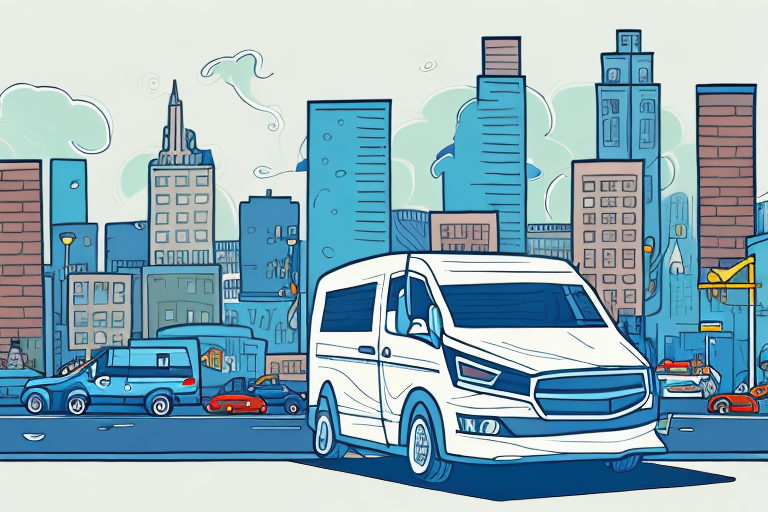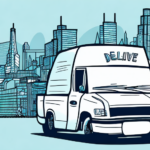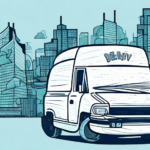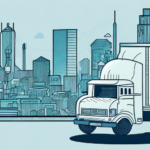Discover the Benefits of Becoming a Delivery Driver
Are you seeking a flexible and rewarding career that allows you to hit the open road? Consider becoming a delivery driver. With the surge in online shopping and e-commerce, the demand for delivery drivers has never been higher. This article delves into the essential aspects of this vital profession and guides you on how to embark on a career as a delivery driver.
Growing Demand for Delivery Drivers
The expansion of online shopping has significantly increased the need for delivery drivers. As more individuals work remotely and alter their shopping habits, the reliance on home delivery services has soared in recent years. According to the Bureau of Labor Statistics, employment for messenger and delivery services drivers is projected to grow by 6% from 2020 to 2030, outpacing the average growth rate for all occupations.
The COVID-19 pandemic further accelerated this demand, with more people staying at home and depending on delivery services for daily necessities. This surge has led to an increase in delivery companies and startups, expanding job opportunities for drivers.
Additionally, the rise of the gig economy has played a pivotal role. Many individuals now work as independent contractors for delivery platforms, offering greater flexibility in their work schedules and the potential to earn supplementary income. Innovations in technology and platforms have also simplified the process for drivers to find work and manage deliveries efficiently.
Overall, the demand for delivery drivers is expected to continue its upward trajectory, making it a promising career path for those who enjoy driving and prefer working independently.
How to Start Your Career as a Delivery Driver
Educational and Licensing Requirements
Starting a career as a delivery driver is relatively straightforward. While requirements may vary depending on the employer, most companies typically require:
- A valid driver's license
- A clean driving record
- Physical ability to lift heavy packages
Some positions may demand additional qualifications, such as a Commercial Driver's License (CDL) or specialized training like Hazardous Materials (Hazmat) certification. It's crucial to research specific job requirements and qualifications ahead of time.
Building a Strong Application
Once you've identified the requirements, the next step is to craft a compelling resume and cover letter. Highlight relevant experience, such as previous delivery roles or any vehicle operation experience. Emphasize qualities like reliability and punctuality, which are essential for delivery drivers.
Consider obtaining a background check and completing a drug test, as many employers mandate these as part of the hiring process. Taking these proactive steps can enhance your chances of securing a delivery driver position.
Top Companies Hiring Delivery Drivers
If you're contemplating a career as a delivery driver, numerous reputable companies are actively recruiting. Some of the leading employers include:
In addition to these giants, many local and regional delivery companies also offer opportunities. These smaller firms may provide a more personalized work environment and the chance to work closely with a tight-knit team. Always verify specific qualifications or certifications required by each company before applying.
The Daily Life of a Delivery Driver
Typical Daily Responsibilities
The daily routine of a delivery driver can vary based on the employer and the nature of the deliveries. Generally, a driver will:
- Pick up packages from a warehouse or distribution center
- Load packages into the delivery vehicle
- Follow a pre-planned route to deliver packages to customers within designated timeframes
Common Challenges
Delivery drivers often face challenges such as:
- Heavy traffic and congestion
- Navigating unfamiliar areas
- Adverse weather conditions
Additionally, drivers must manage customer interactions, which can include answering delivery-related queries, providing information, and addressing complaints. Effective communication skills are vital in handling these situations professionally.
Some roles may also require handling cash or credit card transactions, necessitating comfort with basic math and technology.
Compensation and Benefits for Delivery Drivers
Salary Expectations
The average hourly wage for a delivery driver in the United States is approximately $15 per hour. However, wages can fluctuate based on factors such as location, company, and experience. Additionally, many delivery drivers have the opportunity to earn extra income through tips, bonuses, or performance-based incentives.
Benefits Offered
Beyond hourly pay, some employers provide benefits including:
- Health insurance
- Retirement plans
- Paid time off
Expenses to Consider
It's important to note that delivery drivers may incur personal expenses, such as:
- Fuel costs
- Vehicle maintenance
- Insurance premiums
These expenses can impact overall earnings and should be factored into financial planning.
Safety Tips for Delivery Drivers
Delivery driving can pose various safety risks. To ensure personal safety and the safety of others on the road, adhere to the following guidelines:
- Always wear seatbelts
- Follow all traffic laws and regulations
- Avoid distracted driving by limiting the use of mobile devices
- Stay alert, especially during night shifts or in adverse weather conditions
Regular vehicle maintenance is also crucial. This includes:
- Checking tire pressure, brakes, and headlights
- Keeping the vehicle clean and organized
- Ensuring that all safety equipment is functioning properly
Prioritizing safety not only protects you and others but also enhances the efficiency and reliability of your deliveries.
Developing Essential Skills for Success
Customer Service Excellence
Exceptional customer service can distinguish you from other delivery drivers. This involves:
- Delivering packages promptly and accurately
- Maintaining a positive and courteous demeanor
- Effectively communicating with customers
Time Management
Efficient time management ensures you complete your delivery routes within allocated timeframes. Strategies include:
- Planning optimal delivery routes
- Prioritizing deliveries based on deadlines
- Avoiding unnecessary detours
Attention to Detail
Meticulousness is crucial in preventing errors such as misdelivered packages or incorrect paperwork. This entails:
- Verifying addresses and package details
- Ensuring all necessary documentation is accurate
- Organizing packages systematically within the vehicle
The Future of Delivery Driving
Emerging Technologies
Technology is revolutionizing the delivery driving industry. Innovations include:
- Autonomous Vehicles: Self-driving delivery trucks and vans are being tested to enhance efficiency and reduce labor costs.
- Drones: Drone deliveries offer the potential for rapid and contactless package distribution, especially in hard-to-reach areas.
Trends Shaping the Industry
Several trends are set to shape the future of delivery driving:
- Electric Vehicles (EVs): With increasing environmental concerns, many companies are transitioning to electric delivery vehicles to reduce their carbon footprint and operational costs.
- Real-Time Tracking and Communication: Advanced tracking systems allow customers to monitor their deliveries in real-time and facilitate seamless communication between drivers and customers.
- Optimized Delivery Routes: Utilizing data analytics and AI to plan the most efficient delivery routes, minimizing fuel consumption and delivery times.
Despite these advancements, human delivery drivers will remain integral to the delivery process for the foreseeable future, ensuring flexibility and personalized customer interactions.
In conclusion, a career as a delivery driver offers numerous benefits, including flexible schedules, competitive pay, and opportunities for advancement. By acquiring the necessary qualifications and honing essential skills, you can embark on a fulfilling journey in this dynamic field.




















